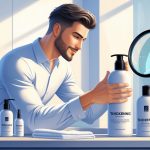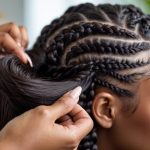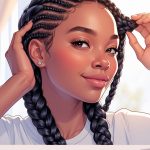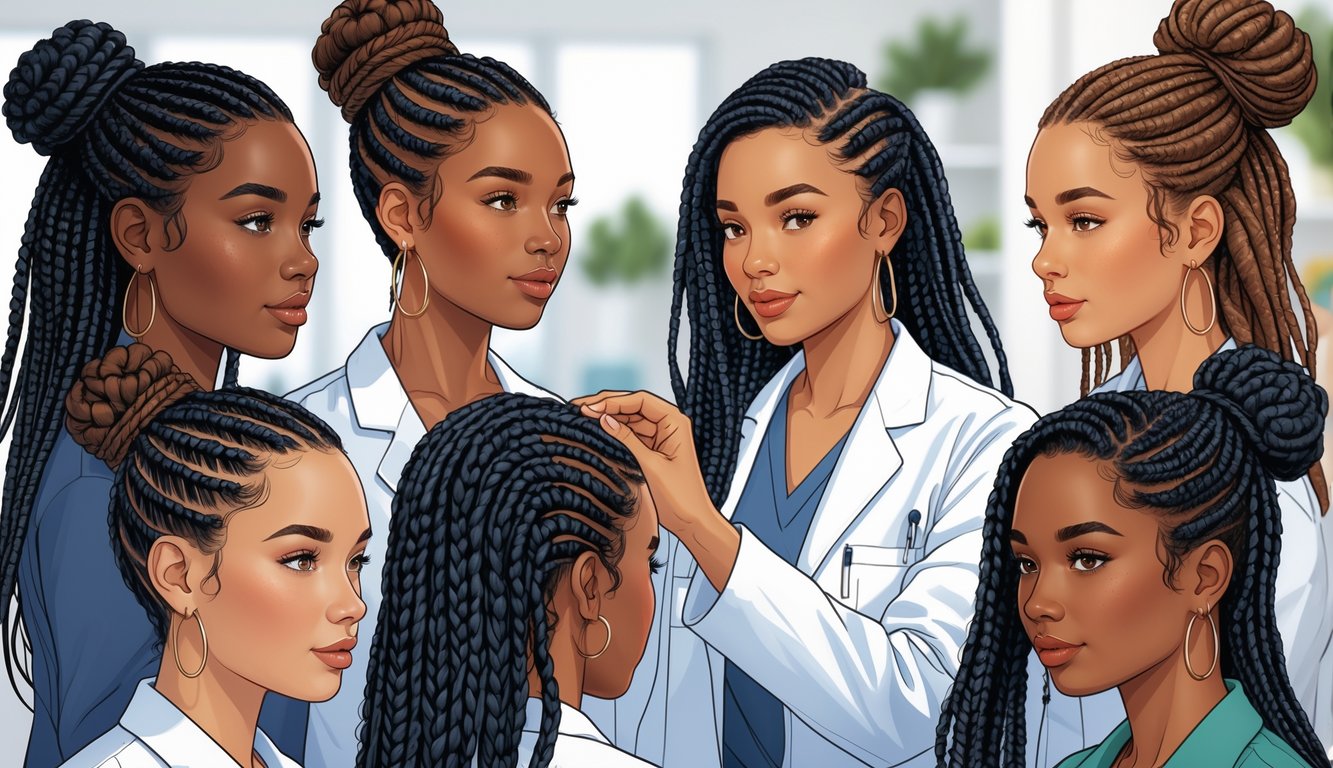
Color Effects and Their Role in Protective Styles

My hair splits in three directions while my fingers sting from box dye—how do people even keep color bright and still pull braids tight enough to launch a coin? Tangles, breakage, nobody puts that on the dye box, but derms see it all the time. If you want color AND protection, you’re not getting both without some kind of catch. It’s always hiding in the bleach aisle.
Potential Impact of Color-Treated Hair
The wildest thing? People act like lightening their hair doesn’t matter. One dermatologist basically yelled at a conference: “Even semi-permanents can trash your cuticle.” There’s actual research (not just stylist gossip) showing bleached hair snaps way faster under tension.
And the worst part isn’t right away. You lighten, you braid, and a few weeks later—dryness, frizz, tiny broken hairs everywhere. Protective style on colored hair? Your risk for traction alopecia shoots up. Tight braids plus weak hair equals breakage and loss. Salons gloss over it because, let’s be honest, nobody wants to lose a color client.
Tips for Maintaining Color and Protection
Some days, coconut oil feels like the answer. Dermatologists just roll their eyes. What actually matters: sulfate-free, color-safe shampoo; don’t yank out braids when your hair’s wet; and get a satin-lined bonnet. If you heat style before braiding, turn it way down—flat ironing bleached hair is just sabotage.
SPF for hair? Not just another useless product. Leave-in UV sprays (Kérastase, Aveda, whatever) don’t fix damage, but they help with fading. Hydrating masks with proteins—wheat, keratin—are all over color forums. But too much protein? Sometimes makes color look weird, so test first.
If you’re DIY-ing color and braids, it probably won’t end well. I’ve seen people lose inches from forgetting how much care colored hair needs in protective styles. Take styles down sooner; the longer colored hair is under stress, the worse it gets. YouTube hacks? Maybe try one, not all of them. Sometimes I wish hair instructions came with a warning label.
Modern Era Trends in Protective Styling
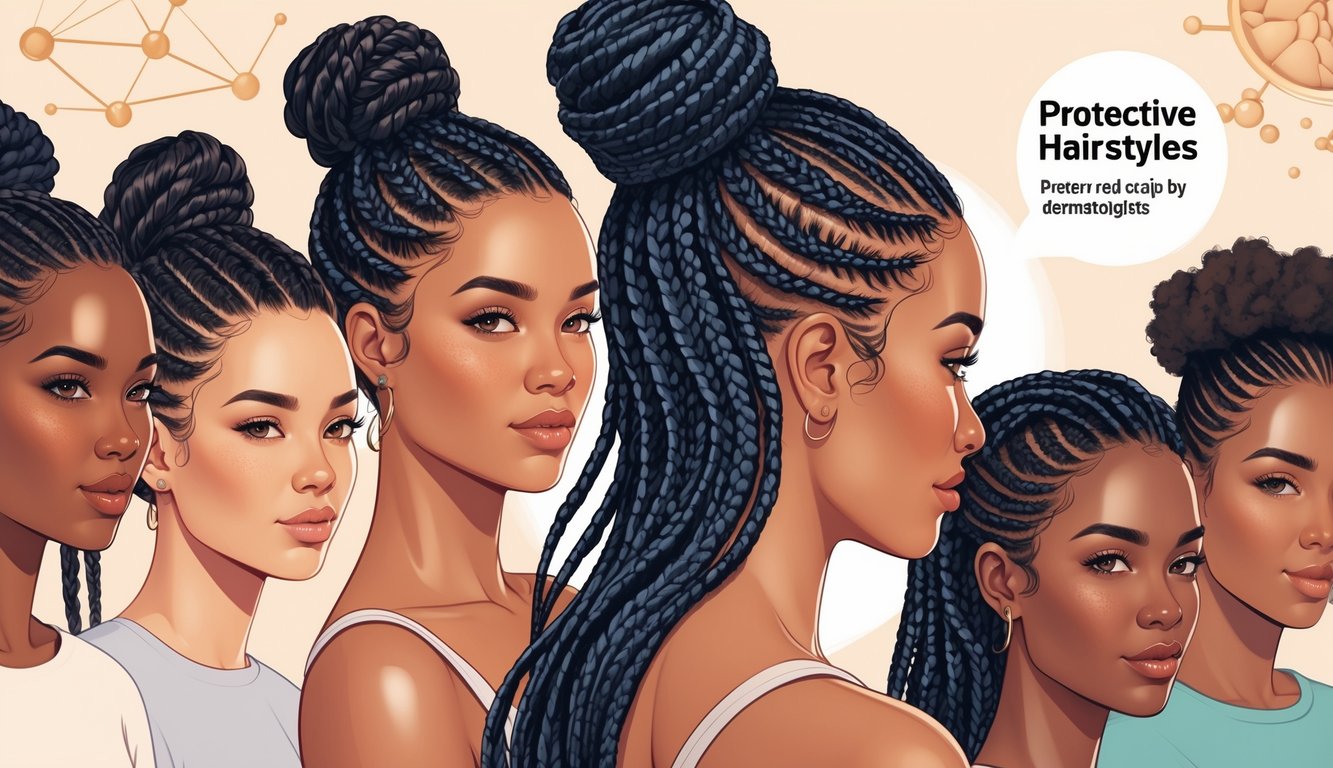
Honestly, I have no clue what the “trend” is anymore. Every week, there’s some new take on scalp health or hairline saving, and then—suddenly, jumbo twists blow up on social, while people quietly side-eye microbraids because, hello, tension. Derms keep telling me, “Protect your edges,” but then I scroll Instagram and see celebs with floor-length braids that probably cost more than my car. Somewhere in the middle, trends just keep shifting.
Evolving Preferences in Braiding
Why do people think all protective styles work the same? I watched three stylists argue about box braids vs. passion twists at a hair event until someone’s crochet hook snapped. Most new preferences? They came from realizing traction alopecia is everywhere; tight braiding damage isn’t a scare tactic. I had to admit, when I switched to low-tension jumbo braids or loose two-strand twists (derms and trichologists keep pushing these now), my scalp stopped throbbing.
People don’t keep protective styles past eight weeks anymore—if you do, you’re basically signing up for “Hairline Rehab.” Tips? Use breathable wig caps, avoid any style where you can feel your pulse in your scalp, and don’t sleep on leave-in conditioners. Lightweight ones with glycerin or aloe = lifesavers. Still using elastic bands on your ends? Might as well buy a hat now, because breakage is coming.
Cultural and Social Influences
So, apparently, these so-called “protective styles” aren’t just about keeping your ends tucked in or whatever—they’re like, loaded with politics now? Walked into a client meeting last month with Fulani braids and, boom, suddenly my hair’s a TED talk. Seriously, half the room just stares. And don’t even get me started on the professor I heard quoting some trend piece about protective styles crossing over to non-Black communities. Like, cool, but are we just gonna ignore the mess of Dutch braids masquerading as Senegalese twists? Is anyone else seeing this?
And why does TikTok hype up five-minute “protective hacks” while actual headwrap traditions just get… nothing? Kids are out here begging for knotless braids so they can look like their favorite YouTuber—meanwhile, fashion brands are slapping “protection wear” labels on what’s basically a work uniform or a pollution mask, and now we’re all arguing about whether hair is for style or literal safety. Wasn’t my grandma using sponge rollers, like, 30 years ago? Now they’re “heatless overnight curls.” Okay.

